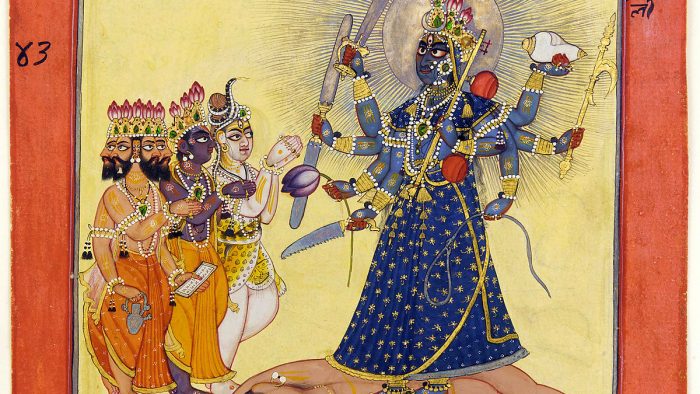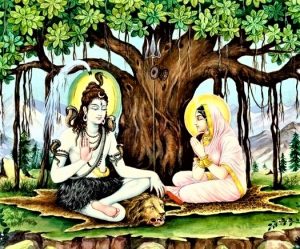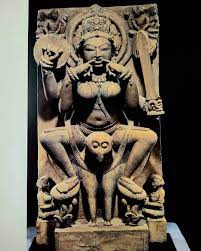9 Astounding Facts on The Practice of Worshipping shakti the Divine Feminine in Tantra Yoga
Table of Contents
Introduction
Tantra yoga is an ancient spiritual tradition that originated in India thousands of years ago. It is a practice that seeks to integrate all aspects of life, including the physical, emotional, and spiritual, in order to attain enlightenment. One of the central themes of Tantra yoga is the worship of the Divine Feminine, which is seen as an essential aspect of the divine.
In this blog, we will explore the practice of worshipping the Divine Feminine in Tantra yoga. We will examine the history and significance of the Divine Feminine in Tantra, and explore some of the practices and rituals associated with this aspect of Tantra yoga.
The History and Significance of Shakti in Tantra Yoga
The worship of Shakti the Divine Feminine has a long history in Hinduism and other Indian religions. In Hinduism, the Divine Feminine is represented by various goddesses, including Durga, Kali, and Lakshmi. These goddesses are seen as embodiments of divine feminine energy, and are worshipped for their ability to bestow blessings and protect devotees from harm.
Worship of Shakti – the Divine Feminine

In Tantra yoga, the worship of the Divine Feminine is an essential part of the practice. The Divine Feminine is seen as the source of all creation, and is therefore essential for spiritual growth and enlightenment. In Tantra, the feminine is represented by the goddess, who embodies various aspects of divine feminine energy such as creativity, intuition, and nurturing.
In addition to Shakti, there are several other aspects of the Divine Feminine that are recognized and honored in Tantra Yoga. Some of these include:
Devi
Devi is another name for the Divine Feminine, and is often used to refer to the energy that underlies all of creation. Devi is seen as the mother of the universe, and is revered for her nurturing and protective qualities.
Kali
Kali is a fierce form of the Divine Feminine that represents the power of transformation and destruction. Kali is often associated with the darker aspects of life, such as death and suffering, and is seen as a force that can help individuals overcome their fears and limitations.
Durga
Durga is a form of the Divine Feminine that represents strength and courage. She is often depicted riding a tiger, and is revered for her ability to overcome obstacles and protect her devotees.
Lalita
Lalita is a form of the Divine Feminine that represents beauty and grace. She is often depicted as a young woman, and is revered for her ability to awaken desire and inspire devotion in her devotees.
Saraswati
Saraswati is a form of the Divine Feminine that represents wisdom and knowledge. She is often depicted playing a musical instrument and is revered for her ability to inspire creativity and learning in her devotees.
In Tantra Yoga, all of these aspects of the Divine Feminine are seen as interconnected and interdependent, and are honored and celebrated as different expressions of the same divine energy.
These practices aim to awaken the dormant energy within the practitioner, known as Kundalini, which is said to reside at the base of the spine.
The Importance of Shakti in Tantra Yoga
The importance of the Divine Feminine in Tantra yoga can also be seen in the practice of Shakti yoga, which is a form of yoga that focuses on the goddess as the embodiment of divine feminine energy. This practice involves visualizations, mantras, and meditations that aim to connect the practitioner with the goddess and awaken the Kundalini energy.
What Is the Role of Shakti in Tantra Yoga
The role of the Divine Feminine in Tantra Yoga is to help individuals access and connect with their own inner power and creativity. Through the worship and contemplation of the Divine Feminine, practitioners can tap into their own inner wisdom, intuition, and creative potential.

In Tantra Yoga, the Divine Feminine is also seen as a symbol of the interconnectedness of all things. Through the worship of the Divine Feminine, practitioners can connect with the universal energy that flows through all beings and all of creation.
The Practice of Puja
One of the central practices of worshipping the Divine Feminine in Tantra yoga is the practice of puja. Puja is a ritual of worship that involves offering offerings to the goddess and seeking her blessings. The offerings can be in the form of flowers, fruits, or other items that hold significance in the ritual.

Puja is not just about asking for material or personal gains, but also about acknowledging the divine feminine energy and connecting with it. Puja is a form of devotional practice that helps the practitioner to develop a relationship with the goddess and to cultivate the qualities of the Divine Feminine within themselves.
The practice of puja can be performed in a variety of settings, from temples to private altars in the home. The puja ritual typically involves the chanting of mantras and the recitation of prayers, as well as the offering of flowers, fruits, and other items.
The Importance of Intention in Puja
In the practice of puja, intention is a crucial aspect. It is not enough to simply perform the ritual; the practitioner must also have a clear intention in mind. The intention could be to cultivate a particular quality of the Divine Feminine, to seek protection and guidance, or to express gratitude for blessings received.
The intention of the practitioner is important because it helps to focus the energy of the ritual and direct it towards a specific goal. Without a clear intention, the puja ritual may lack direction and may not be as effective as it could be.
The Importance of Visualization in Puja
Visualization is another important aspect of the practice of worshipping the Divine Feminine in Tantra yoga. Visualization involves creating mental images of the goddess and imagining oneself in her presence.
Visualization is an essential aspect of the practice of puja in Tantra yoga. It involves creating mental images of the goddess and visualizing oneself in her presence. Visualization is a powerful tool for cultivating the qualities of the Divine Feminine within oneself and for connecting with the goddess on a deeper level.
How Visualization in Tantra Yoga Cultivate Qualities of Mata Shakti
Visualization helps to focus the mind and direct the energy of the puja ritual toward a specific goal. When one visualizes the goddess, they create a mental image that represents the qualities of the Divine Feminine they wish to cultivate. For example, if one wishes to cultivate the quality of compassion, they may visualize the goddess as a compassionate figure, radiating love and kindness.

Visualization can also help to create a sense of connection and intimacy with the goddess. When one visualizes themselves in the presence of the goddess, they create a feeling of closeness and familiarity. This can help to deepen one’s relationship with the goddess and cultivate a sense of devotion and reverence.
Visualization is also useful for creating a sense of peace and calm during the puja ritual. When one focuses their attention on the mental image of the goddess, they can tune out distractions and create a sense of inner stillness. This can be especially useful for those who struggle with meditation or find it difficult to quiet their mind.
The Process of Practicing Visualization in Puja
To practice visualization in puja, one should start by choosing a goddess to focus on. This could be a specific goddess, such as Kali or Durga, or a more general representation of the Divine Feminine. Once the goddess has been chosen, the practitioner should create a mental image of her in their mind.
The Mental Image of Shakti
The mental image should be as detailed and vivid as possible. The practitioner should try to visualize the goddess in as much detail as possible, including her clothing, hair, and facial features. They should also visualize the goddess in a specific setting, such as a temple or natural setting.
As the puja ritual progresses, the practitioner should continue to focus on the mental image of the goddess. They should imagine themselves in her presence and visualize the qualities of the Divine Feminine they wish to cultivate.
While practicing visualization in puja, it is important to choose a specific goddess to focus on and create a detailed mental image of her. The practitioner should continue to focus on the mental image throughout the ritual, imagining themselves in the presence of the goddess and visualizing the qualities of the Divine Feminine they wish to cultivate. With practice, visualization can become a powerful tool for spiritual growth and enlightenment in the practice of Tantra yoga.
Type Of Worshipping Shakti by Tantric or Tantra Yogis
Tantric worship of the Divine Feminine, also known as Shakti, is a central practice in Tantra. The worship of the Divine Feminine is seen as a way to connect with the creative energy of the universe and access higher states of consciousness. There are several types of worshipping the Divine Feminine in Tantra, including the following:
Puja
A puja is a devotional ritual that involves the offering of prayers, flowers, and other offerings to the Divine Feminine. This ritual is usually performed in front of an image or statue of the Goddess, and is meant to express devotion and gratitude to the Goddess.
Mantra Sadhana
Mantra is a form of meditation that involves the chanting of sacred sounds or phrases. In Tantra, there are many mantras that are associated with the Divine Feminine, and chanting these mantras is seen as a way to connect with the Goddess and access her energy.
Yantra Sadhana
Yantra is a sacred geometric symbol that is used in meditation and ritual to represent the Divine Feminine. Yantras are typically constructed using various materials such as metal, wood, or paper, and are used as a focal point for meditation and visualization.
Tantra Sadhana
Tantra Sadhana is a form of spiritual practice that involves the use of various techniques such as meditation, pranayama, and yoga postures to awaken the kundalini energy and connect with the Divine Feminine. This practice is usually done under the guidance of a tantric guru, and is meant to help the practitioner access higher states of consciousness.
Kundalini Yoga
Kundalini Yoga is a form of yoga that is focused on the awakening of the kundalini energy, which is seen as the Divine Feminine energy within the human body. This practice involves the use of specific postures, breathing techniques, and meditation practices to activate the kundalini energy and connect with the Divine Feminine.
Conclusion
There are still several types of worshipping the Divine Feminine in Tantra, including sadhana, Murthy puja, Various Kriyas, mantra, yantra, Tantra Sadhana, and Kundalini Yoga. These practices are meant to help the practitioner connect with the creative energy of the universe, awaken the kundalini energy, and access higher states of consciousness.
References
- Bagchi, P.C. (1989). Evolution of the Tantras, Studies on the Tantras. Kolkata: Ramakrishna Mission Institute of Culture. ISBN 978-81-85843-36-0. Second Revised Edition
- Banerjee, Sures Chandra (1988). A Brief History of Tantra Literature. Kolkata: Naya Prokash.
- Banerjee, Sures Chandra (2002). Companion to Tantra. Abhinav Publications. ISBN 978-1-70174-022-8.
- https://www.researchgate.net/publication/248654487_Tantric_Visions_of_the_Divine_Feminine_The_Ten_Mahavidyas
